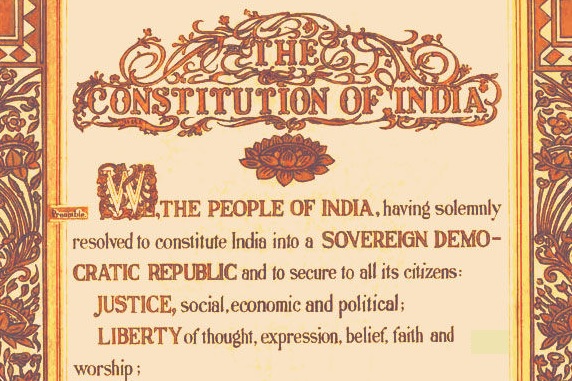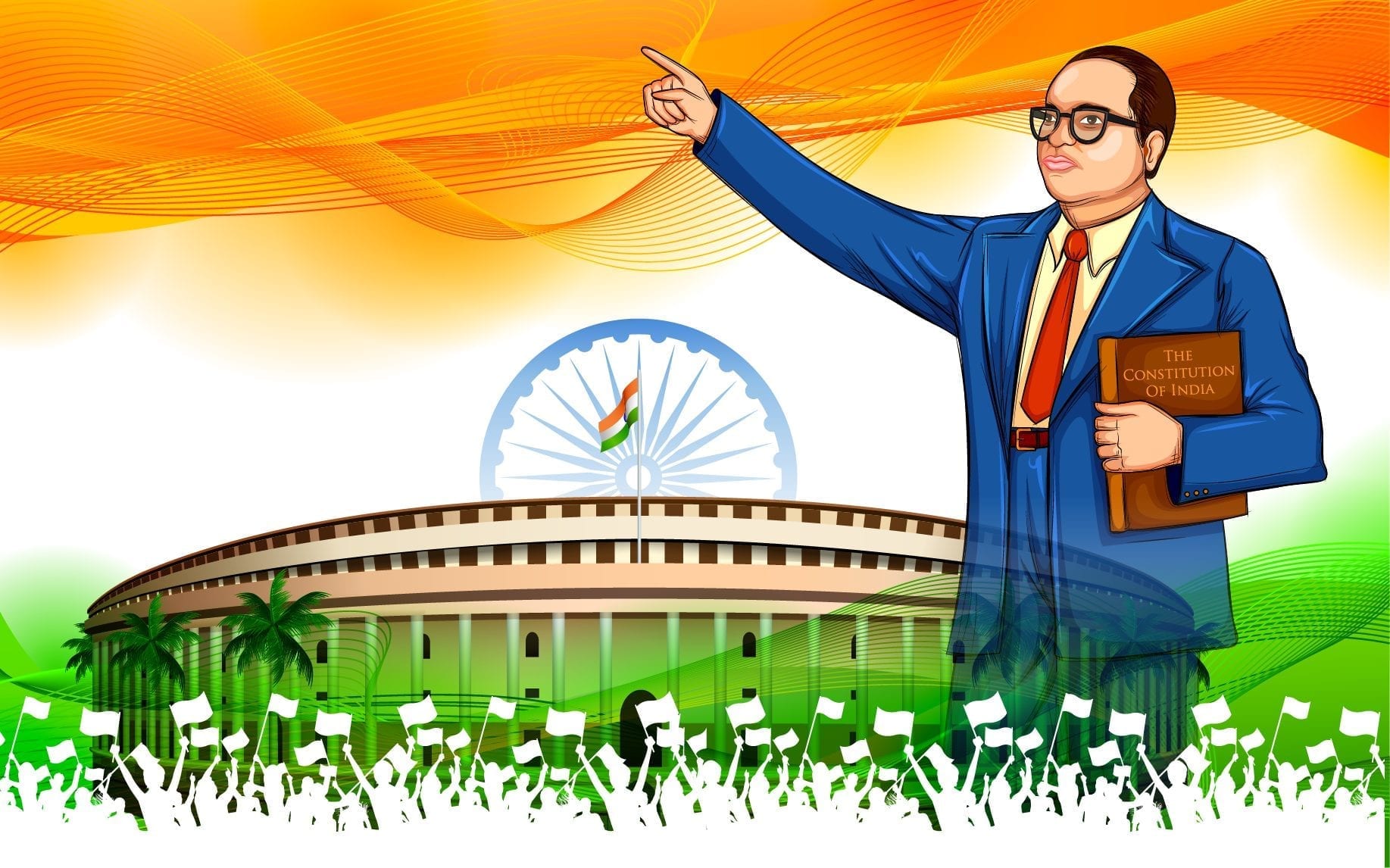“Constitution is not a mere lawyers document, it is a vehicle of Life and it’s spirit is always the spirit of age.”
– Dr. B.R. Ambedkar

Democracy is a sacred trust in India, and the Constitution is its holy book. It safeguards democracy and inspires us to cherish our diversity and tolerance. Our Constitution is a living constitution that is put into action every day by statecraft. Speaking on the Constitution (Fourth Amendment) Bill, 1955 Pandit Nehru had said: “After all, the Constitution is meant to facilitate the working of the Government and the administrative and other structures of this country. It is meant to be not something that is static and which has a static form in a changing world, but something which has something dynamic in it, which takes cognizance of the dynamic nature of modern conditions, modern society.”
The Indian Constitution is more than just a legal instrument, it is a Magna Carta for the country’s socioeconomic change. It embodies the ambitions and dreams of India’s billion-plus people. The nation has expanded and there have been significant changes in the social, economic, global, and political spheres of life since the Constitution was adopted. Our democracy has evolved and prospered within the enormous provisions of this document.
In the words of Dr. B. R. Ambedkar, the mastermind of the Indian Constitution. The constitution, as the ultimate law of the country, plays a critical role in ensuring law and order. Thus, we might examine the spirit and vitality of the Constitution, which drives the Legislative, Executive, and Judicial branches to prioritise the basic requirements of every citizen of the country. So, the Constitution of India is revealing the glorified by the first sentence written in the Preamble itself:
“WE, THE PEOPLE OF INDIA, having solemnly resolved to constitute India into a
SOVEREIGN SOCIALIST SECULAR DEMOCRATIC REPUBLIC
and to secure to all its citizens:……….“

Here, the People of India is the motive and Base behind the life of the constitution. Because India is a democratic country, the Constitution of India acquires its power from the people of India. However, owing to the vision and motivation of the framers, particularly Dr. B. R. Ambedkar, who examined all of India’s fundamental challenges, the Constitution remains neither rigid nor flexible in character. The constitution contains a plethora of meanings and interpretations.
LIVING FEATURES OF INDIAN CONSTITUTION
Federal System:
When we examine the structure and nature of the Indian Constitution, it is not made clear that India has a federal system; however, the rules and guidelines governing the central and state governments, as well as other democratic organs, give the impression that India maintains a federal system with a unitary government. A combination of the Federal and Unitary systems in the same constitution is unique in the world.
Parliamentary Form of Legislation:
According to the Hon’ble Supreme Court, “our Constitution, though federal in structure, is modelled on the British parliamentary system where the executive is deemed to have the primary responsibility for the formulation of government policy and its transmission into law, though the condition precedent to the exercise of this responsibility is the retention of the Legislative branch of the state’s confidence.” As a result, India has a Parliamentary system of legislation in which the President, as the Head of the Union, passes the bill as an Act. This idea was inspired by the British Parliament system. We also have a Bicameral Legislature.
Combination of Rigidity and Flexibility:
The Indian Constitution has rules and regulations that are both rigid and flexible in nature. Despite being the world’s oldest and first written constitution, the United States Constitution contains just eight articles. There are few amendments, and it is difficult to move forward with one. It demonstrates the nature of rigidity here. In contrast, in the British constitution it is unwritten, and the laws can be changed. This shows that the constitution is flexible. As a result, the Indian Constitution is neither rigid nor wholly flexible.
Independent Judiciary:
India has an independent judiciary that plays a critical role in ensuring the legitimacy of bills passed by the Legislative Assembly. This feature is known as “Judicial Review.” The Judiciary determines whether or not bills passed by parliament are constitutionally legitimate and beneficial to society. Because the judiciary has its own hierarchy, the Supreme Court of India has the ultimate authority to review the constitutionality of acts and bills.
Fundamental Rights:
Every person in our nation has basic rights and duties that protect their political, legal, and social equality. These are referred to as “Fundamental Rights.” So, the Indian constitution guarantees six essential rights. These rights are enumerated in Articles 14 to 32 of India’s Constitution. If any of the essential rights are violated, every person has the right to approach to the Supreme Court or the High Court to protect their fundamental rights under Article 32 or Article 226 respectively of the Indian Constitution.

CONCLUSION
True, we have inherited a very “robust” Constitution. The Constitution’s core framework is perfectly suited to our country. The Constitution is more than just a document, it is an expression of people’s beliefs and aspirations.
As characteristics such as the Federal system, Parliamentary form of government, Independent Judiciary, Bicameral Legislation, Less Rigid and Less Flexible nature, and so on make the Constitution more active, we must recognise that the Indian Constitution is a “Charter of Values and Principles.”
When the Constitution was made, leaders and people of our country shared a common vision of India. In the Constituent Assembly , all the leaders mentioned this vision: dignity and freedom of the individual, social and economic equality, well-being of all people, unity based on national integrity. This vision has not disappeared. People and leaders alike hold to the vision and hope to realize it. As a result, even after half a century, the Constitution, founded on this vision, has remained a symbol of respect and authority. The fundamental ideals that govern our collective imagination have not changed.
Some more interesting topics :-
INDIA AT 75 : HOW WAS AUGUST 15TH CHOSEN AS INDIA’S INDEPENDENCE DAY ?
IS PREAMBLE A PART OF THE INDIAN CONSTITUTION ?
PARLIAMENTARY PRIVILEGES IN INDIA
